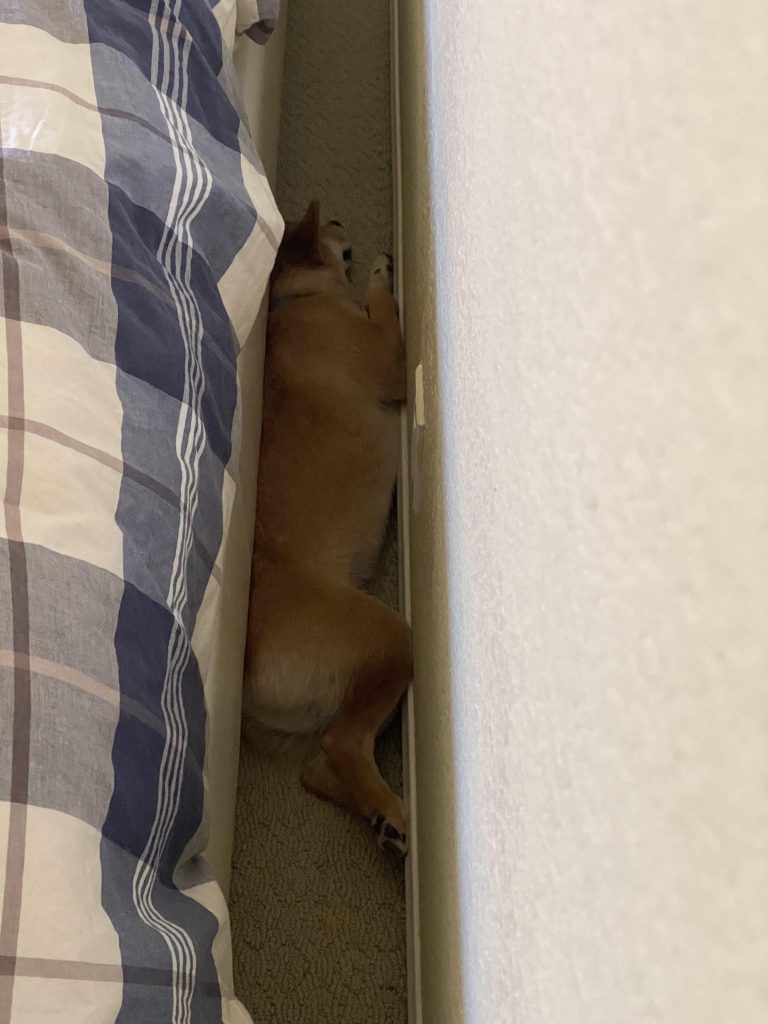Have you ever noticed your dog suddenly disappearing under the bed and wondered why? It can be confusing and even a little worrying when your furry friend hides away like that.
You might ask yourself, “Is my dog scared? Sick? Or just being stubborn? ” Understanding why your dog hides under the bed can help you connect better with them and make sure they feel safe and happy. You’ll discover the surprising reasons behind this behavior and learn what you can do to help your dog feel more comfortable.
Keep reading—your dog’s comfort and your peace of mind are closer than you think.

Credit: www.dogster.com
Common Reasons Dogs Hide
Have you ever noticed your dog suddenly disappearing under the bed and wondered why? Dogs often seek out hidden spaces, and understanding the reasons behind this behavior can help you support your furry friend better. Let’s look at some common reasons why dogs hide under the bed and what it means for their well-being.
Seeking Comfort And Security
Your dog might hide under the bed simply because it feels like a safe spot. This cozy, enclosed space mimics a den, providing a sense of protection and calm. Think about how your dog curls up tightly—it’s their way of finding comfort in a familiar place where they feel secure.
Have you noticed your dog retreating there after a long day or when they’re tired? This behavior is a natural way for them to rest without interruptions. Creating a safe, quiet area can help if your dog needs a break from household activity.
Avoiding Loud Noises
Loud noises like thunderstorms, fireworks, or even vacuum cleaners can scare dogs. Many will seek refuge under the bed to escape these sounds. This hiding spot muffles the noise and helps them feel shielded from what they find frightening.
If your dog rushes under the bed during storms, it’s a clear sign they’re trying to protect themselves. You can help by offering calming aids or creating a quiet retreat with blankets and familiar toys nearby. How does your dog react to noisy situations? Paying attention can guide you in making their environment less stressful.
Escaping Stressful Situations
Dogs also hide when they feel overwhelmed or stressed. Changes like new people, unfamiliar animals, or moving to a new home can trigger this response. Under the bed, your dog finds a private space to regroup and feel less exposed.
Think about times when your dog has hidden after a vet visit or a busy family gathering. This behavior is their way of coping with too much stimulation. Offering gentle reassurance and avoiding forcing them out can help them regain confidence at their own pace.

Credit: www.kinship.com
Health Issues Behind Hiding
When your dog suddenly starts hiding under the bed, it’s not just a quirky behavior to ignore. Often, this retreat signals underlying health problems that need your attention. Understanding the health issues behind this hiding habit can help you respond quickly and compassionately.
Pain Or Illness Symptoms
Dogs often seek quiet, secluded spots when they feel pain or are unwell. Hiding under the bed provides a dark and safe area where they can rest without disturbance. Watch for signs like limping, whimpering, or changes in appetite that might point to injury or illness.
If your dog usually loves to play but suddenly avoids activity and hides, it’s a clear red flag. These symptoms can indicate anything from arthritis to infections or even internal discomfort. Have you noticed your dog avoiding touch or showing sensitivity in certain areas?
Signs Of Anxiety Or Fear
Fear and anxiety can drive your dog to hide under the bed as a way to escape stressful situations. Loud noises, new environments, or unfamiliar people might trigger this reaction. Notice if your dog’s hiding coincides with thunderstorms, fireworks, or visitors.
Your dog might also exhibit trembling, excessive panting, or pacing before retreating under the bed. These behaviors show they’re overwhelmed and looking for comfort. Could your dog’s environment be causing more stress than you realize?
Behavioral Changes To Watch
Hiding is often accompanied by other behavioral changes that can help you identify health concerns. Look for decreased social interaction, sudden aggression, or loss of interest in favorite activities. These shifts can indicate both physical and emotional problems.
Keep a journal of these behaviors along with hiding episodes. This record can provide valuable insights for your vet. Have you noticed your dog acting differently but weren’t sure what it meant?
Environmental Triggers
Environmental triggers often cause dogs to hide under the bed. These triggers create stress or discomfort in their surroundings. Dogs use hiding as a way to feel safe and protected. Understanding these triggers helps owners support their pets better.
New People Or Pets In The Home
New faces can make dogs feel nervous. They may not trust strangers right away. A dog might hide under the bed to avoid meeting new people or pets. This behavior shows they need time to adjust. Giving your dog space helps them feel secure.
Changes In Routine
Dogs like predictability in their daily life. Sudden changes in feeding, walking, or playtime can cause stress. When their routine shifts, dogs may seek a quiet place to calm down. Hiding under the bed offers a peaceful retreat. Keeping routines steady can reduce this stress.
Unfamiliar Surroundings
New environments can confuse or scare dogs. Moving to a new home or visiting a strange place triggers this feeling. Dogs hide under the bed to find a safe spot. This gives them time to observe and feel less anxious. Familiar items like toys can help them adjust faster.

Credit: www.youtube.com
How To Help Your Dog Feel Safe
Helping your dog feel safe is key to reducing hiding behavior under the bed. Dogs often seek shelter when stressed or scared. Providing comfort encourages them to come out and relax. Understanding their needs builds trust and security.
Creating A Comfortable Space
Set up a cozy area for your dog. Use soft blankets and a favorite toy. Choose a quiet corner away from loud noises. Make sure the space is easy to access. This spot should feel like a safe retreat. Avoid forcing your dog out of hiding.
Using Calming Techniques
Try gentle petting or soft talking to soothe your dog. Play calming music or white noise to reduce stress. Use pheromone sprays or diffusers designed for dogs. Offer treats during calm moments to create positive feelings. Keep routines consistent to help your dog feel secure.
When To Seek Veterinary Advice
Notice if hiding increases or your dog shows other signs of distress. Look for changes in appetite, energy, or bathroom habits. These can signal health problems or anxiety disorders. Consult a vet to rule out medical issues. Professional help may include behavior training or medication.
Frequently Asked Questions
Why Do Dogs Hide Under Beds?
Dogs hide under beds for comfort or safety. This behavior might be due to anxiety, fear, or the need for a quiet space. It can also be a natural instinct to find shelter. Understanding your dog's behavior can help address any underlying issues.
Is My Dog Hiding From Fear?
Yes, dogs can hide under beds due to fear. Loud noises, unfamiliar people, or stressful situations might trigger this behavior. Providing a calm environment and reassurance can help alleviate their fear. If the behavior persists, consulting a vet or behaviorist is advisable.
Can Hiding Indicate A Health Issue?
Hiding can sometimes indicate health issues in dogs. If your dog suddenly starts hiding frequently, it could be a sign of pain or discomfort. It’s important to monitor any additional symptoms and consult your vet for a thorough check-up.
How Can I Stop This Behavior?
To stop your dog from hiding, create a safe and comforting environment. Positive reinforcement and training can encourage them to stay in designated areas. Address any stressors or fears they might have. Consulting a professional trainer can also be beneficial.
Conclusion
Dogs hide under beds for many simple reasons. They may feel scared, tired, or just want to rest. This behavior is normal and shows how they cope with stress. Watching your dog closely helps you understand their needs. Give them a calm space and gentle care.
Small changes can make your dog feel safe and loved. Remember, patience and kindness build trust between you and your pet. Every dog is different, so stay patient and observe. Caring for your dog’s feelings strengthens your bond every day.

Emily Barker is the founder of ChillDogLife.com, a space dedicated to helping pup parents discover the best dog products, lifestyle tips, and cozy ideas for happier homes.
A lifelong dog lover, Emily combines her passion for pets with a knack for research to share trusted recommendations on everything from toys and furniture to health and everyday care.
Her goal is simple: to make life easier, stylish, and more joyful for dogs and the people who love them.







